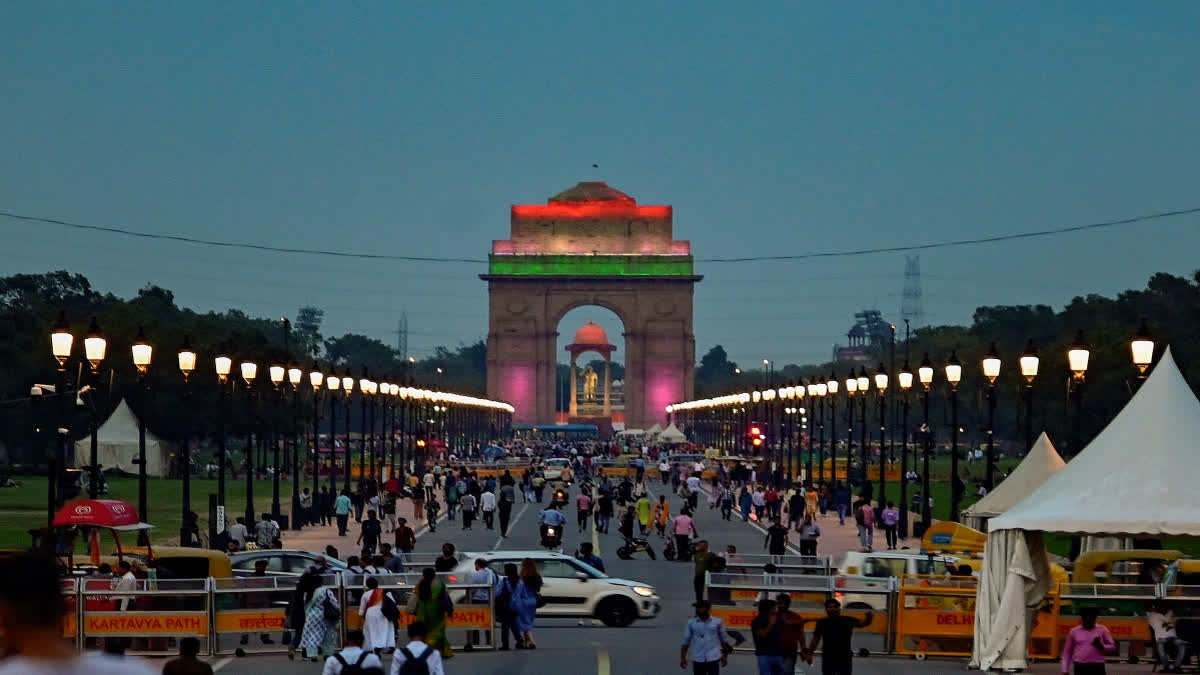As India celebrated its 78th Independence Day, its journey from a nation impoverished by colonial rule to a country that is now seen as a key player in global power politics, and an economic powerhouse has been exemplary. India is one of the many countries that broke the imperial chains in the post-Second World War period.
It attained independence in 1947, along with Pakistan, while Sri Lanka and Myanmar got independence from the British in 1948. On the other hand, China became a free nation in October 1949. There are Asian neighbours that got freedom much later like Maldives in 1965 and Bangladesh in 1971. It is interesting to note that Japan was never colonised and it does not celebrate Independence Day.
While there are several other countries in Europe, Africa and the Middle East, that gained freedom along with or after India, parallels could be drawn with its Asian counterparts due to socio-economic, religious and cultural similarities among Asian nations. Such analysis gives an idea of where we stand vis-a-vis our neighbours, who started their journey as free countries, along with us. To know this, we need to understand India's incredible growth story.
India’s Growth Story:
India reeled under colonial rule and exploitation for nearly two centuries and inherited an impoverished nation at the time of independence. It is evident from the facts revealed by the works of famous Cambridge historian Angus Maddison. He found that in the year 1700, India’s share of world income was 22.6% and Europe’s share was 23.3%.
However, it was just 3.8% in 1952. This suggests the magnitude of plunder India suffered at the hands of its colonial masters. Today, after 78 years of independence, India stands as the fifth-largest economy with a GDP of $3.7 trillion. This journey from innocence to strength was not easy. In fact, India stumbled on the front of economic growth in the initial years of independence and gained momentum with the state taking the lead in the conduct of economic affairs.
While this socialist model gave results in the the beginning, it transformed into a regressive economic regime, driven by licences and permits. This stifled industrial growth and private enterprise, pushing the country to the brink of economic collapse. However, India trekked the reform path and resorted to liberalisation, globalisation and privatisation in 1991 and gradually set the house in order.
It is to be noted that India also fought four wars-three with Pakistan and one with China but still managed to achieve economic excellence and now has the world’s second-largest standing army with 1.45 million military personnel. This feat could not be repeated by any other Asian country except China, with a GDP of $3.7 trillion and a standing army with two million active military personnel.
This success of India was made possible due to its cautious and calibrated approach of successive governments, that brought stability into the system, over a period of time through a gradual, reformist approach, guided by carefully crafted and precisely executed fiscal and monetary policy decisions. On the front of financial markets also, the policymakers had been cautious with respect to the deregulation of markets. In fact, this approach helped a great deal in insulating the country’s financial system from multiple financial crises, while the rest of the world suffered, and given the deeper integration of global financial markets.
How Our Asian Neighbours Are Doing?
China, Pakistan, Sri Lanka, and Myanmar are the countries that gained independence almost along with India, while Bangladesh and Maldives emerged as a free country much later. When we look at our neighbours today, only China competes with India in terms of economic strength, military might and technological prowess.
However, there is a significant qualitative difference between the success achieved by these two Asian giants. While China achieved its success based on a repressive political regime with a one-party rule, India trekked the success path based on democratic principles and consensus in a multi-party, parliamentary democracy. In fact, India is the largest democracy in the world, where the transition of power happens smoothly every five years, which in itself is a remarkable feat for a country with a billion-plus population.
